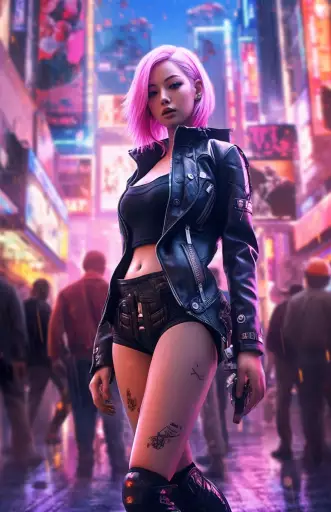Explore the Best AI Image Gallery

Pixels and Pulse: How AI-Generated Images are Reshaping Marketing
The world of marketing is constantly evolving, driven by technological advancements that reshape how brands connect with their audiences. One of the most recent and impactful innovations is the emergence of AI-generated images. These algorithms, trained on massive datasets of visual information, can now create stunning, original imagery on demand, pushing the boundaries of creativity and prompting a reevaluation of traditional marketing practices.
The Creative Canvas Reimagined
For marketers, AI image generation presents a game-changer. It offers an unprecedented level of customization and efficiency. Imagine crafting unique visuals for each social media post, tailoring imagery to specific demographics, or generating variations of a campaign concept in minutes. This newfound flexibility empowers marketers to experiment, iterate rapidly, and create highly personalized experiences.
The impact extends beyond marketing departments. AI-generated images are finding applications in website design, advertising campaigns, product mockups, and even the creation of immersive brand experiences. The potential for innovation is boundless.
Applications Across Marketing
- Social Media Content: Generate eye-catching visuals for platforms like Instagram, Facebook, and TikTok, ensuring consistent branding and engaging audiences.
- Personalized Advertising: Tailor ad creatives to individual user preferences, demographics, and browsing history, increasing relevance and click-through rates.
- Product Visualization: Create realistic renderings of products in various settings and configurations, enhancing online shopping experiences and reducing returns.
- Website Design: Generate unique headers, backgrounds, and illustrations to add visual interest and personality to websites, improving user engagement.
Ethical Considerations: Navigating Uncharted Territory
While the potential benefits are undeniable, AI-generated images also raise ethical considerations that require careful attention. One key concern is the potential for misuse, such as creating deepfakes or spreading misinformation. Its crucial to establish guidelines and regulations to ensure responsible development and deployment of this technology.
Another important aspect is the impact on creative professionals. While AI can augment human creativity, its essential to recognize the value of human artistry and ensure that AI tools are used to empower rather than replace creatives.
The Future of Visual Communication: A Collaborative Landscape
Looking ahead, AI-generated images are poised to become an integral part of the marketing landscape. We can expect to see further advancements in image quality, customization options, and integration with other technologies, such as augmented reality and virtual reality.
The future likely holds a collaborative relationship between human creatives and AI tools. Marketers will leverage AIs capabilities for efficiency and personalization, while human designers will continue to bring their unique vision, empathy, and storytelling skills to the table. This partnership will unlock new possibilities for visual communication, creating immersive and engaging experiences that connect with audiences on a deeper level.